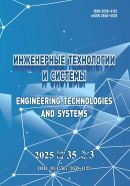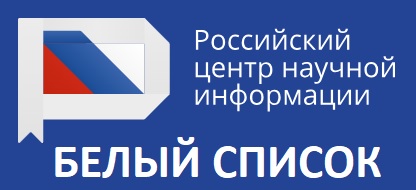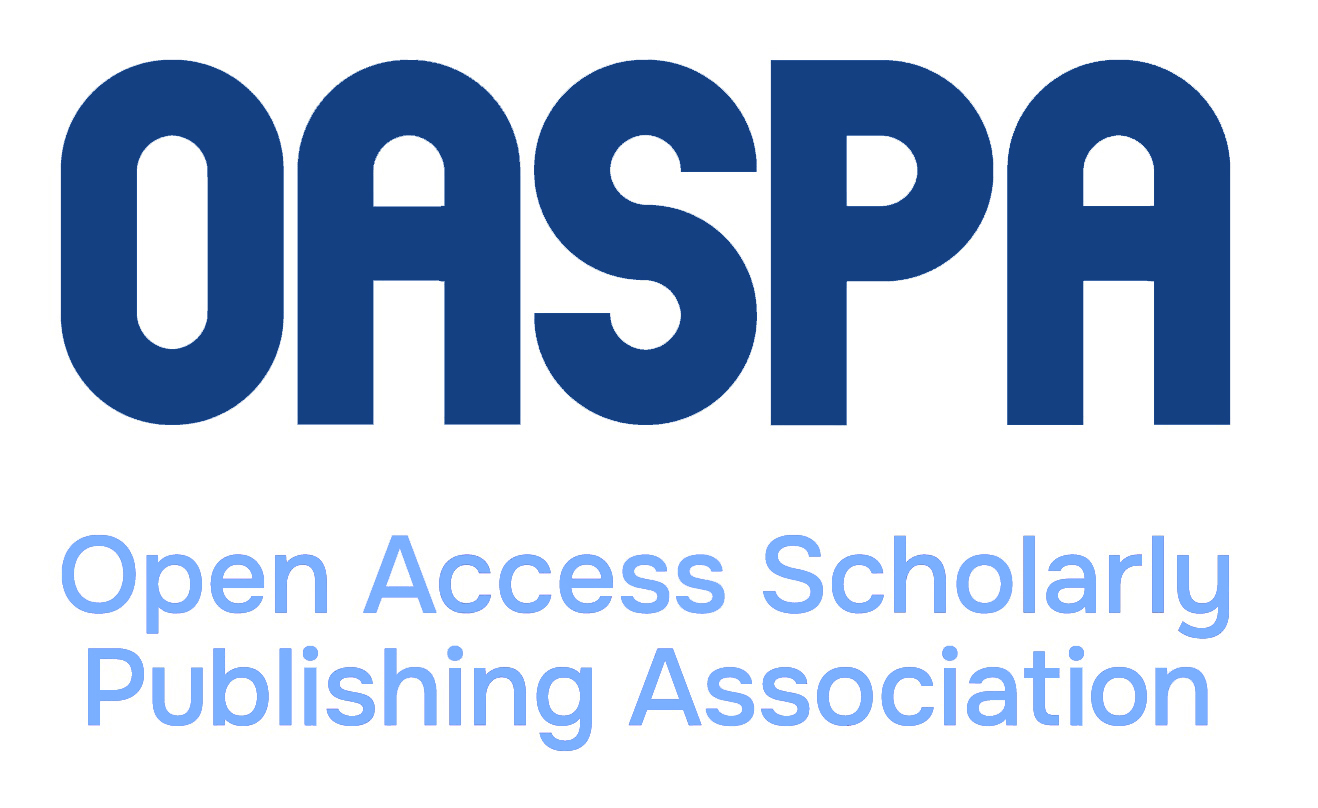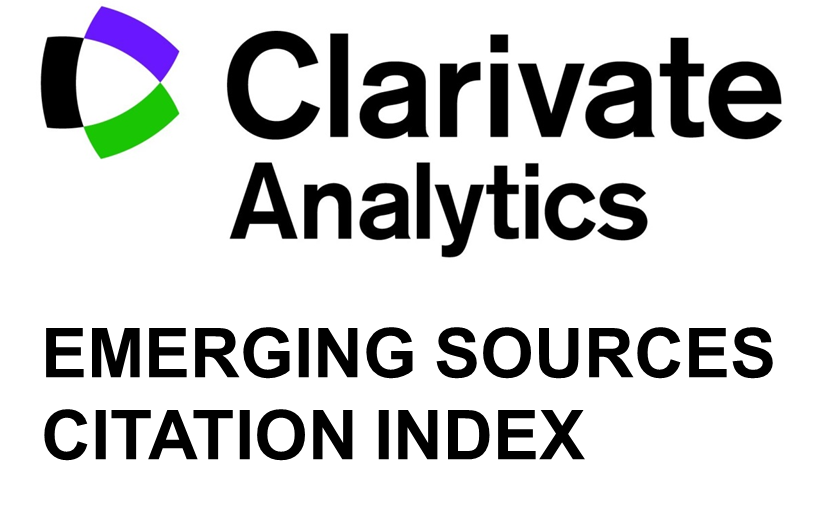UDK 004.9:622.625.1
DOI: 10.15507/0236-2910.028.201802.191-206
Study of Informative Value of Features in Rail Condition Monitoring
Evgeniy M. Tarasov
Vice Rector, Samara State Transport University (2V Svobody St., Samara 443066, Russia), D.Sc. (Engineering), ResearherID: C-2505-2018, ORCID: https://orcid.org/0000-0003-2717-7343, This email address is being protected from spambots. You need JavaScript enabled to view it.
Vladimir L. Gerus
Postgraduate Student, Automation, Telemechanics and Communication Chair, Samara State Transport University (2V, Svobody St., Samara 443066, Russia), ResearherID: C-2513-2018, ORCID: https://orcid.org/0000-0002-9559-0458, This email address is being protected from spambots. You need JavaScript enabled to view it.
Anna E. Tarasova
Specialist of Department of Organization of Teaching Process, Samara State Transport University (2V, Svobody St., Samara 443066, Russia), ResearherID: C-2497-2018, ORCID: https://orcid.org/0000-0001-6907-6036, This email address is being protected from spambots. You need JavaScript enabled to view it.
Introduction. The multidimensionality and the proximity of class boundaries due to external disturbances significantly complicate rail condition monitoring. Many informative signs are taken into account during the monitoring. Expansion of the a priori character alphabet in complex recognition system leads to a significant increase in economic losses. The emergence of measurement errors of many features and an increase in the processing time of information worsen the real time monitoring of railways. The article deals with the diminution of the dimensionality of the feature space of the recognizing system in rail condition monitoring and facilitates the formation of a working set of characteristics with the indication of the most informative combinations.
Materials and Methods. The informativeness evaluation of the signs was carried out with the help of correlation coefficients and a trained classifier with a decisive function. The arguments of the classifier were the input and output electrical parameters of the four-pole of the rail line. The Kolmogorov-Gabor polynomial of the second degree of complexity, trained by solving an incompatible system of equations, was used as a decisive function. Mathematical and technical calculations were carried out in Mathcad programming.
Results. In summary, these results show that the most informative indicators for a reliable classification of rail condition are input and output parameters of the four-port network of the rail line. All classes are reliably recognized. The recognition quality functions exceed 1.2.
Conclusions. The results obtained in the study confirm the feasibility of approaches in forming a work set of features. The findings of this article can be used in the development of the principles of pattern recognition.
Keywords: informativity of features, correlation function, quality criteria, decisive function, rail line
For citation: Tarasov Е. М., Gerus V. L., Tarasova А. Е. Study of Informative Value of Features in Rail Condition Monitoring. Vestnik Mordovskogo universiteta = Mordovia University Bulletin. 2018; 28(2):191–206. DOI: https://doi.org/10.15507/0236-2910.028.201802.191-206
Authors’ contribution: E. M. Tarasov – formulating the problem, theoretical consulting, data analysis; V. L. Gerus – analysis of subject area and research algorithms, reviewing the literature; A. E. Tarasova – development and implementation of algorithm, data processing using Mathcad software, data analysis.
All authors have read and approved the final version of the paper.
REFERENCES
1. Zheleznov D. V., Tarasov E. M., Isaycheva A. G., Mikheeva T. I. Development of the learning classifier of rail lines states with multivariate informative features. Trudy SPIIRAN = Works of St. Petersburg Institute for Informatics and Automation of the Russian Academy of Sciences. 2017; 50(1):32–54.
2. Tennakoon R. B., Bab-Hadiashar A., Cao Z., Hoseinnezhad R., Suter D. Robust model fitting using higher than minimal subset sampling. IEEE Transactions on Pattern Analysis and Machine Intelligence. 2016; 38(2):350–362.
3. Zheleznov D. V., Tarasov E. M. Development of an intelligent system of determinating the coordinates and the speed of the train. Transport and Telecommunication. 2016; 17(6):138–143.
4. Khudayberganov T. R., Adinayev Kh. S., Artikbayev M. A. [Mathematical methods of pattern recognition]. Tekhnika. Tekhnologii. Inzheneriya = Technics. Technologies. Engineering. 2017; 4(2.1):45–47.
5. Ailem M., Role F., Nadif M. Model-based co-clustering for the effective handling of sparse data. Pattern Recognition. 2017; 72:108–122.
6. Zhuravlev Yu. I., Laptin Yu. P., Vinogradov A. P., Zhurbenko N. G., Lykhovyd O. P., Berezovskyi O. A. Linear classifiers and selection of informative features. Pattern Recognition and Image Analysis. 2017; 27(3):426–432.
7. Zenin A. V. [Analysis of methods of pattern recognition]. Molodoy uchenyy = Young Scientist. 2017; 16:125–130.
8. Kulbarakov M. A. [To the question of pattern recognition without a teacher in technical diagnostics]. Molodoy uchenyy = Young Scientist. 2014; 18:55–57.
9. Bai L., Cheng X., Liang J., Shen H., Guo Y. Fast density clustering strategies based on the k-means algorithm. Pattern Recognition. 2017; 71:375–386.
10. Ben-Hur A., Horn D., Siegelmann H. T., Vapnik V., Liu Z. Support vector clustering. J. of Machine Learning Research. 2001; 2:125–137.
11. Kazanskiy N. L., Popov S. B. Integrated design technology for computer vision systems in railway transportation. Pattern Recognition and Image Analysis. 2015; 25(2):215–219.
12. Myasnikov E. V. Analysis of approaches to feature space partitioning for nonlinear dimensionality reduction. Pattern Recognition and Image Analysis. 2016; 26(3):474–482.
13. Dokukin A. A., Ryazanov V. V., Shut O. V. Multilevel models for solution of multiclass recognition problems. Pattern Recognition and Image Analysis. 2016; 26(3):461–473.
14. Mashkin A. V. [The use of entropy measures in problems of assessing the informativeness of characters for pattern recognition]. Programmnyye produkty i sistemy = Software Products and Systems. 2009; 4:79–80.
15. Bartenev V. G. [Analysis of the efficiency of detectors of correlated signals in noise for small samples of observations]. Tsifrovaya obrabotka signalov = Digital Signal Processing. 2016; 4:35–39.
16. Erdogmus D. P., Principe J. C. Information theoretic learning.
17. Chernogorova Yu. V. [Methods of pattern recognition]. Molodoy uchenyy = Young Scientist. 2016; 28:40–43.
18. Polevoy Yu. I. Classification of adaptive rail track circuits. Mir transporta = World of Transport. 2011; 1:124–129.
19. Bobkov A. V. Parameter space normalization in General Hough transform. Nauka i obrazovaniye = Science and Education. 2014; 2:286–295.
20. Zheleznov D. V., Kotenko A. G., Mikheeva T. I., Gerus V. L., Tarasova A. E. Development of invariant trainable identifier of train coordinate. Vestnik SamGUPS = Samara State Transport University Bulletin. 2017; 2:100–112.
21. Tarasov E. M., Teplyakov V. B., Gumennikov V. B., Tretyakov G. M., Isaicheva A. G. On ensuring invariance in problems of control of rail-line conduction. Russian Electrical Engineering. 2017; 88(3):105–108.

This work is licensed under a Creative Commons Attribution 4.0 License.

















